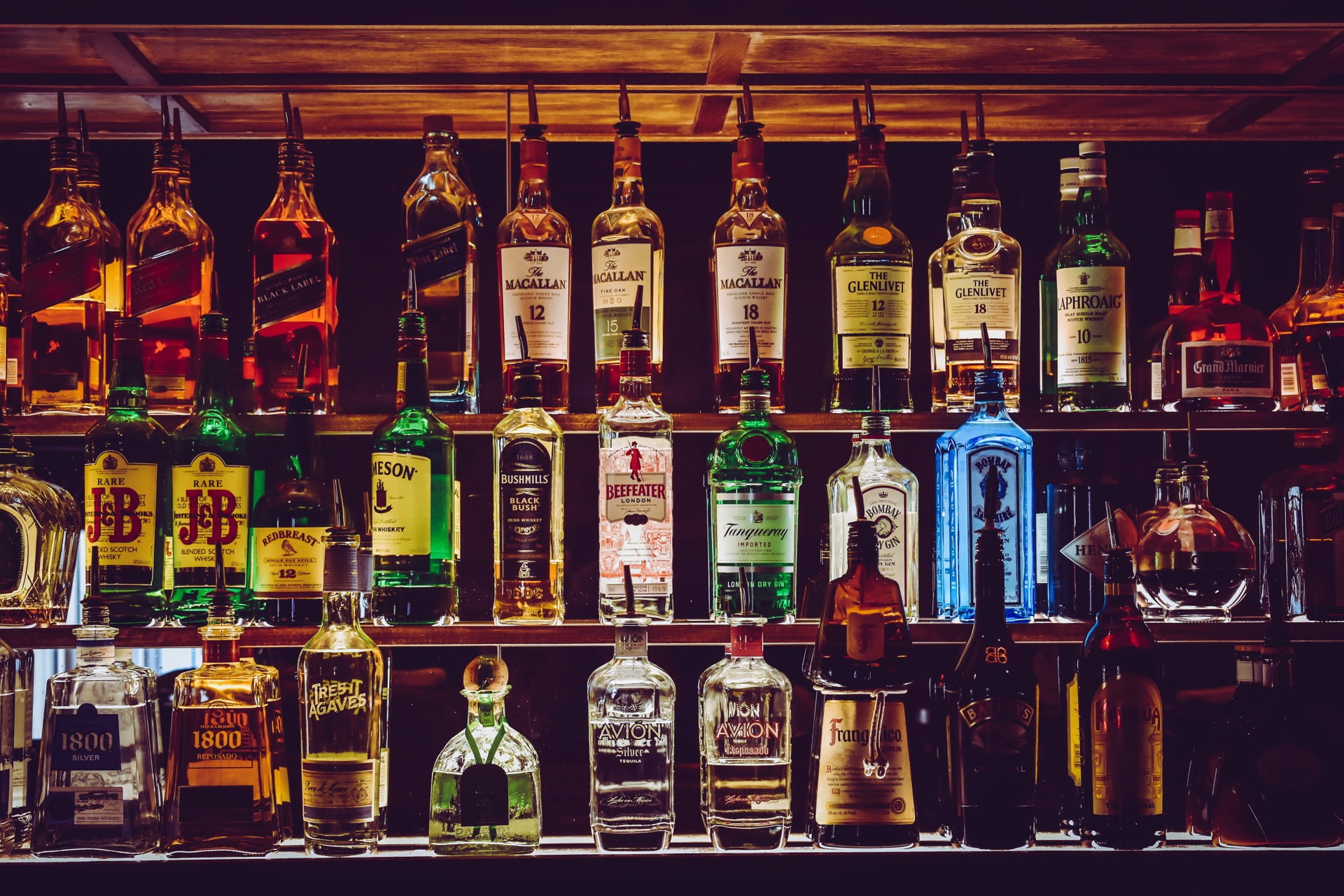Brandy Benedictine Cocktail Ingredients
- 2 parts Brandy
- 1 part Benedictine D.O.M. liqueur
Brandy Benedictine Cocktail Step by Step Mixing Guide
- Fill a cocktail shaker with ice cubes.
- Add 2 parts Brandy to the shaker.
- Add 1 part Benedictine D.O.M. liqueur to the shaker.
- Stir the mixture gently for about 20-30 seconds to chill and combine the ingredients.
- Strain the mixture into a chilled cocktail glass.
- Garnish the drink with a lemon twist or a cherry, if desired.
Alternative Ingredients and Substitutes for Making Brandy Benedictine
The Brandy Benedictine cocktail is a classic and sophisticated drink that combines the rich, herbal flavors of Benedictine liqueur with the smooth, warming notes of brandy. While the original recipe calls for these two specific ingredients, there are several alternatives that can be used, depending on availability or dietary preferences.
- Brandy: Brandy is the primary spirit in this cocktail, providing a base of oak-aged, complex flavors. If brandy is unavailable or not preferred, you can substitute with cognac, armagnac, or even aged rum or bourbon to achieve a similar richness and depth of flavor.
- Benedictine D.O.M. liqueur: Benedictine is a unique, herbal liqueur that adds complexity and sweetness to the cocktail. If Benedictine is not accessible, you can explore chartreuse (green or yellow), Drambuie, or even amaro as alternatives, as they share similar herbal and botanical notes.
For non-alcoholic options, you can consider the following:
- Brandy: Instead of brandy, you can use a non-alcoholic brandy alternative, such as a grape-based or distilled non-alcoholic spirit, to mimic the flavor profile.
- Benedictine D.O.M. liqueur: For the herbal component, you can try a non-alcoholic botanical or herbal syrup, such as a lavender, chamomile, or ginger syrup, to add complexity and sweetness to the drink.
Remember, when substituting ingredients, the ratios and proportions may need to be adjusted to achieve the desired flavor balance in the cocktail.
What I Really Like About Brandy Benedictine
As a lover of complex and nuanced cocktails, the Brandy Benedictine has long been a personal favorite of mine. The harmonious blend of the rich, oak-aged brandy and the velvety, herbal Benedictine liqueur creates a truly captivating and refined drinking experience.
What I adore most about this cocktail is the way the flavors intertwine and dance across the palate. The Benedictine’s signature blend of herbs and botanicals, with its hints of honey, saffron, and citrus, provides a delightful complexity that adds an extra layer of sophistication. The brandy, on the other hand, lends a warm, comforting presence that grounds the cocktail, creating a balance that is simply divine.
I find the texture of the Brandy Benedictine to be particularly alluring – the velvety, almost creamy mouthfeel coats the tongue, providing a luxurious and indulgent sensation with each sip. This rich, velvet-like quality adds to the overall sense of sophistication, making it the perfect cocktail to savor and enjoy during moments of relaxation or celebration.
Moreover, the Brandy Benedictine transports me to a cozy, dimly lit lounge, where the air is thick with the aroma of caramelized spices and dried fruits. It’s a cocktail that evokes a sense of nostalgia and comfort, while still maintaining an air of refinement and elegance.
Whether I’m sipping it on a chilly evening or enjoying it as a nightcap, the Brandy Benedictine always delivers a truly remarkable and memorable cocktail experience. It’s a drink that I find myself returning to time and time again, as its complex flavors and velvety texture never fail to delight and captivate my senses.
Brandy Benedictine Cocktail History
To begin, we must venture back in time to the 16th century, where the foundations of the Brandy Benedictine were laid. It was during this era that the Benedictine liqueur, a complex and aromatic elixir, was first created by Benedictine monks in the abbey of Fécamp, France. This unique spirit, infused with a blend of herbs and spices, would later become a key component in the creation of the Brandy Benedictine.
Now, fast forward to the late 19th century, when the cocktail scene was starting to flourish. Bartenders and mixologists began experimenting with various spirits and liqueurs, seeking to create new and intriguing concoctions. It was during this time that the Brandy Benedictine made its debut, as clever mixologists recognized the potential of combining the rich, herbaceous notes of Benedictine with the smooth, warming qualities of brandy.
The Brandy Benedictine soon gained popularity among discerning drinkers, who appreciated the depth of flavor and complexity that this cocktail offered. As the 20th century progressed, the Brandy Benedictine became a staple in many cocktail lounges and bars, beloved by those with a penchant for sophisticated and flavorful drinks.
Today, the Brandy Benedictine continues to captivate and delight cocktail enthusiasts around the world. Its enduring appeal lies in the perfect marriage of the Benedictine liqueur’s distinctive character and the smooth, inviting nature of brandy. Whether sipped neat or incorporated into various cocktail recipes, the Brandy Benedictine remains a testament to the enduring creativity and artistry of the bartending craft.
So, the next time you find yourself in the mood for a cocktail with a rich history and a depth of flavor, consider the alluring Brandy Benedictine. It’s a drink that will transport you through the centuries, one sip at a time.
Brandy Benedictine Cocktail Taste Profile
One sip of this cocktail and you’ll be transported to a cozy, dimly lit lounge, where the air is thick with the aroma of caramelized spices and dried fruits. The Benedictine’s signature blend of herbs and botanicals, including honey, saffron, and a touch of citrus, dance across the tongue, providing a velvety, almost creamy mouthfeel that lingers delightfully. The brandy’s presence adds a certain richness and depth, giving the cocktail a luxurious, velvet-like texture that coats the mouth with each sip.
As you savor the Brandy Benedictine, you’ll notice a delicate interplay of flavors – the herbaceous notes of the Benedictine lending a subtle complexity, while the brandy’s warm, oaky tones provide a comforting base. The overall experience is one of sophistication and refinement, perfect for those moments when you want to indulge in a truly remarkable and memorable cocktail.
Serving Suggestions for Brandy Benedictine Cocktail
Brandy Benedictine is a delightful and versatile cocktail that can be enjoyed in a variety of settings. Whether you’re hosting a sophisticated dinner party or relaxing with friends, this captivating libation is sure to impress. Consider serving it as an after-dinner digestif, or enjoy it as a sipping drink on a cozy evening. With its rich, herbal notes, Brandy Benedictine pairs beautifully with dark chocolate, dried fruit, or a selection of artisanal cheeses.
Appropriate Glassware for Brandy Benedictine
The classic glassware of choice for Brandy Benedictine is a snifter or a rocks glass. The wide bowl of a snifter allows the aromas of the brandy and Benedictine to fully develop, while the narrow opening concentrates these captivating scents toward your nose.
Alternatively, a rocks glass provides a sturdy, elegant vessel that showcases the warm, amber hue of the cocktail. Either option will bring out the best in this sophisticated libation.
Garnishing Tips for Brandy Benedictine
When garnishing your Brandy Benedictine, keep it simple and elegant. A thin lemon twist or an orange peel can be an excellent choice, as their citrus notes complement the herbal complexity of the drink.
For a touch of visual flair, consider a sprig of fresh thyme or rosemary, which will also impart subtle aromatic notes. Avoid overpowering the cocktail with excessive garnishes – let the Brandy Benedictine shine in all its glory.
Serving Temperature for Brandy Benedictine
Brandy Benedictine is best served chilled, but not icy cold. The ideal serving temperature is around 50-55°F (10-13°C). This allows the flavors and aromas to fully blossom, while still providing a refreshing and soothing drinking experience.
You can achieve this temperature by serving the cocktail over a few ice cubes in the glass, or by briefly chilling the glass and the prepared drink before serving. This careful temperature control will ensure that your Brandy Benedictine is savored to perfection.
Great Appetizers to Pair with a Brandy Benedictine Cocktail
The Brandy Benedictine cocktail is a classic and sophisticated drink that pairs well with a variety of appetizers. Typically, the ideal appetizers to complement this cocktail should be savory, rich, and able to balance the complexity of the brandy and Benedictine liqueur.
Here are some great appetizer options:
- Baked Brie with Caramelized Onions – The creamy, indulgent texture of the baked brie and the sweet, slightly tangy caramelized onions complement the smooth, herbal notes of the Brandy Benedictine cocktail.
- Prosciutto-Wrapped Figs – The salty, cured prosciutto and the sweet, juicy figs create a delightful contrast that pairs beautifully with the robust flavors of the cocktail.
- Mushroom Crostini – The earthy, umami-rich flavors of the sautéed mushrooms on toasted bread provide a savory counterpoint to the cocktail’s complex herbal and spirit-forward characteristics.
- Smoked Salmon Blinis – The delicate, briny flavors of the smoked salmon and the creamy, tangy crème fraîche on the blinis complement the cocktail’s depth and balance its richness.
- Goat Cheese and Walnut Stuffed Dates – The sweet, sticky dates, tangy goat cheese, and crunchy walnuts create a harmonious combination that accentuates the cocktail’s herbaceous and slightly sweet notes.
Brandy Benedictine Cocktail Alcohol by Volume (ABV)
When it comes to the Alcohol by Volume (ABV) for this cocktail, it is considered to be on the higher side. Brandy typically has an ABV ranging from 35% to 60%, while Benedictine D.O.M. liqueur has an ABV of around 40%. When blended together, the resulting Brandy Benedictine cocktail has an estimated ABV of around 45-50%.
This high ABV means that the Brandy Benedictine cocktail is classified as a strong alcoholic beverage. Consuming too many of these cocktails in a short period can lead to intoxication and impairment of judgment and motor skills, which can be dangerous.
As a general guideline, it is recommended to limit the consumption of Brandy Benedictine cocktails to no more than 2-3 drinks per person, depending on individual tolerance and body weight. Consuming more than this amount may result in feeling the effects of alcohol, making it unwise to engage in activities that require alertness, such as driving or operating machinery.
It is essential to remember that alcohol affects everyone differently, and the number of drinks one can consume while staying alert can vary. Therefore, it is crucial to always drink responsibly, pace yourself, and never drive or engage in hazardous activities after consuming alcohol.
Tip: To encourage the reader to take care when drinking alcohol, it is recommended to always have a designated driver or make arrangements for alternative transportation when planning to enjoy a Brandy Benedictine cocktail or any other alcoholic beverage. Responsible drinking is the key to ensuring a safe and enjoyable experience.
Nutritional Values of the Brandy Benedictine Cocktail
- Calories: 200 kcal
- Total Fat: 0 g
- Saturated Fat: 0 g
- Cholesterol: 0 mg
- Sodium: 0 mg
- Total Carbohydrates: 15 g
- Dietary Fiber: 0 g
- Total Sugars: 13 g
- Protein: 0 g











